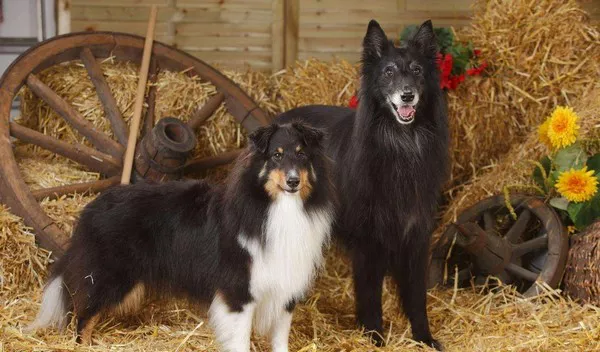Tortoises are some of the oldest creatures on Earth, known for their slow and steady movements, hard protective shells, and long lifespans. Among the many species of tortoises, the Ivory Sulcata Tortoise, scientifically known as Centrochelys sulcata, stands out due to its size, striking appearance, and special care needs. If you’re interested in acquiring one of these fascinating creatures as a pet, one of the first questions that likely comes to mind is: how much is an Ivory Sulcata Tortoise?
In this article, we will not only address the cost of purchasing an Ivory Sulcata Tortoise but also explore important details about the breed, its habitat and care requirements, lifespan, and the overall commitment needed to raise one of these tortoises. By the end of this guide, you will have a comprehensive understanding of the financial and care-related aspects involved in having an Ivory Sulcata Tortoise as a pet.
Overview of the Ivory Sulcata Tortoise
The Ivory Sulcata Tortoise is a unique variation of the African Sulcata Tortoise, which is the third-largest species of tortoise in the world. Native to the Sahel region of Africa, including countries like Sudan, Chad, and Mali, Sulcata tortoises are adapted to hot, dry climates. The “Ivory” variant is a color morph that stands out due to its lighter shell compared to the typical brown or tan coloration of the standard Sulcata.
While Sulcata tortoises, in general, can weigh anywhere from 80 to 100 pounds (36 to 45 kg) and measure up to 30 inches (76 cm) in length, the Ivory Sulcata Tortoise is particularly notable for its pale, almost ivory-colored shell. This unique trait gives the Ivory Sulcata its name and makes it an attractive option for collectors and tortoise enthusiasts.
The Price of an Ivory Sulcata Tortoise
Now, the question we’ve all been waiting for: how much does an Ivory Sulcata Tortoise cost?
The cost of an Ivory Sulcata Tortoise can vary significantly based on several factors, including:
Age: Younger tortoises, especially hatchlings, tend to be cheaper than older, fully-grown tortoises. Hatchlings can range from $200 to $500, while adults can cost between $600 and $1,500, depending on their size and coloration.
Breeder and Source: The price can also depend on the breeder or pet store from which the tortoise is purchased. Reputable breeders who specialize in rare morphs, like the Ivory Sulcata, may charge a premium for the tortoises they sell. Similarly, tortoises that are bred and raised in captivity may be more expensive than those taken from the wild, which could also have legal implications depending on your location.
Rarity of the Morph: The Ivory Sulcata is a rare color morph. Although not as rare as some other tortoise morphs, its unique ivory-colored shell makes it more expensive than the common brown or yellow Sulcata. The more vivid and unique the coloration, the higher the price tag.
Health and Condition: The health of the tortoise also plays a significant role in the price. Healthy, well-maintained tortoises that have been raised in optimal conditions will cost more. If a tortoise has health issues, it could be sold at a lower price, but this can also lead to additional costs for veterinary care.
In addition to the cost of the tortoise itself, it’s important to consider the ongoing costs of ownership, including habitat setup, food, veterinary care, and other maintenance requirements. These costs can add up quickly, and it’s essential to be prepared financially for the responsibility of keeping an Ivory Sulcata Tortoise.
Factors That Affect the Cost of an Ivory Sulcata Tortoise
Several other factors can influence the price of an Ivory Sulcata Tortoise:
Market Demand: The popularity of the Ivory Sulcata morph can fluctuate, impacting prices. In times of high demand, breeders may increase the price of their tortoises, whereas, in periods of lower demand, prices may drop.
Size and Age of the Tortoise: As mentioned earlier, the size and age of the tortoise significantly impact its price. While younger tortoises are more affordable, purchasing an older tortoise can cost you a significant amount of money, especially if the tortoise is nearing the end of its life and has been well-cared for.
Geographic Location: The cost of the Ivory Sulcata Tortoise can also vary based on your location. Tortoises may be more expensive in certain areas where they are less common or harder to find. Shipping costs can also add to the overall price if you’re buying from a breeder located in another state or country.
Specialty Breeding and Certification: If you want a tortoise with a specific genetic background, breeder certifications, or a documented lineage, this can increase the price. Some buyers may prefer purchasing from breeders who offer certificates of health, ensuring that the tortoise has been tested for diseases and parasites.
Legal and Ethical Considerations: It’s important to note that some tortoises, including Sulcatas, may be subject to legal restrictions in certain areas. The sale and export of wild-caught tortoises are regulated to protect endangered species. In places where tortoises are protected by law, you may find that the price of legally obtained captive-bred tortoises is higher due to the costs involved in breeding, documentation, and compliance with legal requirements.
The Cost of Caring for an Ivory Sulcata Tortoise
Owning an Ivory Sulcata Tortoise isn’t just about the upfront cost of the tortoise itself; there are ongoing expenses to keep in mind. While Sulcata tortoises are known for being relatively low-maintenance compared to other exotic pets, they still require significant care to thrive in captivity. Some of the major costs associated with caring for an Ivory Sulcata Tortoise include:
Habitat Setup: Sulcata tortoises need a large, secure enclosure, whether outdoors or indoors. The habitat must be spacious to accommodate their size and allow for movement. If you plan to house your tortoise indoors, you will need to provide a large, well-ventilated enclosure that has proper heating, lighting, and humidity control. The cost for setting up an indoor enclosure can range from $300 to $1,000, depending on the size and equipment required. For outdoor enclosures, expect to spend between $500 to $2,000 for a secure and safe outdoor pen that includes a shaded area and shelter.
Heating and Lighting: Since Sulcata tortoises are native to hot climates, they need a heat source to regulate their body temperature. Heating lamps and UVB lighting are essential for the tortoise’s health, as UVB light helps them metabolize calcium and prevent shell deformities. The cost of a good heating and lighting setup can be anywhere from $100 to $300.
Food: Sulcata tortoises are herbivores and require a diet that consists mainly of grass, hay, and leafy greens. A well-balanced diet is crucial for their health and growth. While feeding an Ivory Sulcata Tortoise is not particularly expensive, you may need to spend between $20 and $50 per month on hay and fresh vegetables.
Veterinary Care: Like all pets, Sulcata tortoises need regular veterinary check-ups. The cost of a veterinary visit for a tortoise can range from $50 to $200 per visit. It’s also wise to set aside a budget for emergencies or unforeseen health problems. In addition, some tortoises may require specialized care, especially if they develop shell issues, respiratory infections, or other health concerns.
Bedding and Maintenance: Maintaining the cleanliness of the tortoise’s habitat is essential to prevent health issues and odor. You will need to invest in proper bedding materials, such as coconut husk, straw, or sand, which can cost around $10 to $50 per month, depending on the size of the enclosure and the materials used.
Lifespan and Long-Term Care Considerations
Before acquiring an Ivory Sulcata Tortoise, it’s crucial to understand that this species has an incredibly long lifespan, often living for 50 years or more in captivity with proper care. This means that you are making a long-term commitment to your tortoise’s well-being.
As your tortoise ages, it will continue to grow and will require larger enclosures and more food. Additionally, it’s important to remember that Sulcata tortoises are not particularly social creatures, so you will need to create an environment where they can live comfortably, whether indoors or outdoors. Over the years, you may find that the costs of maintaining an Ivory Sulcata Tortoise increase due to the need for larger enclosures, more food, and more frequent veterinary visits.
Conclusion
In summary, the cost of an Ivory Sulcata Tortoise can vary greatly based on factors such as age, breeding, and health. While the initial price can range from $200 for a hatchling to over $1,500 for an adult, there are additional costs to consider for housing, food, and veterinary care. The long lifespan of these tortoises means that owning one is a long-term financial commitment.
If you’re ready to take on the responsibility of caring for an Ivory Sulcata Tortoise, it’s essential to consider not only the upfront cost but also the ongoing expenses and the time and effort required to ensure that your tortoise lives a healthy and happy life. By being prepared and informed, you can provide a loving and supportive environment for your new companion, ensuring that it thrives for many decades to come.
Related Topics:























